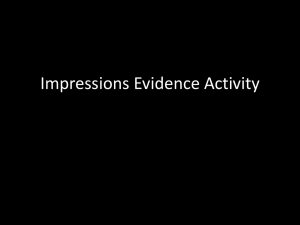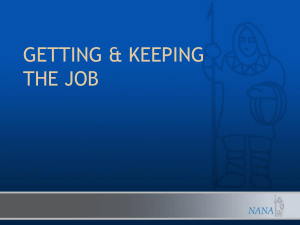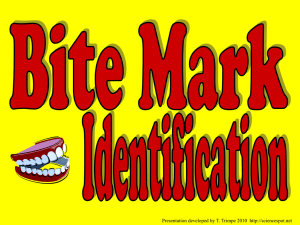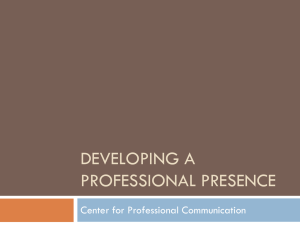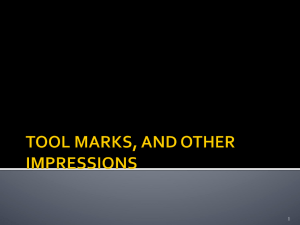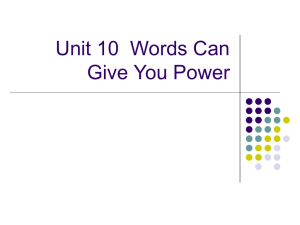Day 48 Tool Marks
advertisement
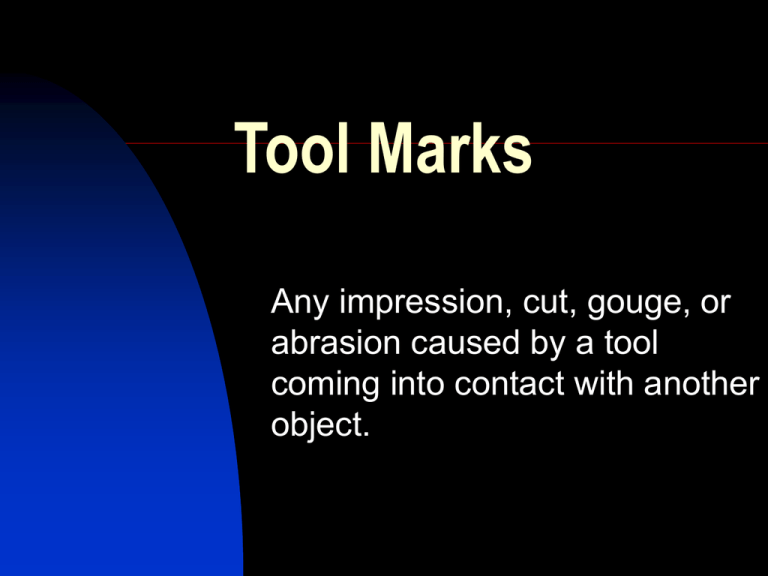
Tool Marks Any impression, cut, gouge, or abrasion caused by a tool coming into contact with another object. Identifying and Comparing Tool Mark Careful examination of these of these impressions can reveal important class characteristics—size and shape of the tool. Microscopic ridges and valleys displayed on the tool are created by the manufacturer, making each tool unique. (Similar to bullet striations) Identifying and Comparing Tool Mark Using a comparison microscope, striation marks from a test tool can be compared to the suspect tool. Collection The entire object or part of the object bearing the tool mark should be collected. Otherwise, photograph or cast the tool mark impression, though clarity of details may be obscured. Do not try to fit the suspect tool into the tool mark impression, this will alter or damage the impression. Other Impressions Different kinds of impressions can be found at a crime scene: Shoe print Tire tracks Fabric impression Collecting Impressions Primary consideration in collecting impressions is the preservation for later examination. Before any impression is moved or cast, it must be photographed with a scale to show all observable details as well as the relation to the overall crime scene. When the impression is on a readily recoverable item, such as glass, paper or floor tile, the item should be transported to the lab in tact. Collecting Impressions When the surface of the impression cannot be transported to the lab, several other methods may be used. Fingerprint lifting Electrostatic lifting eg. Pathfinder Casting Aerosol cast for snow eg. Snow Impression Wax Chemical enhancement of bloody footprint Lifting an Impression An impression encountered on a smooth surface, such as a wall, counter top, or flooring, can be lifted similar to that of fingerprints. A large lifting material covers the entire impression. A fingerprint roller is used to eliminate any air pockets before the impression is lifted. Electrostatic Lifting By creating an electrostatic charge, the dust attaches to the lifting film. One device is called the Pathfinder. Casting When a shoeprint or tire mark is found in soft earth, casting is the best preservation. Class I dental stone is mixed with water to form a paste. Casting The impression is outlined and the casting mixture is carefully poured. Casting Once the dental stone has dried, the walls are removed and the impression is carefully lifted. Casting Once the impression has air-dried for 24-48 hours, it can be shipped to the lab for examination and comparison. Casting Snow Impressions Snow Impression Wax is an aerosol product used to lift prints in the snow. Three light coats of wax are sprayed onto the impression at an interval of 1-2 minutes between layers and then letting dry for 10 minutes before pouring the casting material. Chemical Formulas A number of chemicals can be used to develop and enhance footwear impressions made with blood. Some chemicals include amido black, leucocrystal violet, Hungarian Red dye, patent blue. Spray area well for several minutes, then rinse with distilled water. Take photographs with scale. SICAR The Shoeprint Image Capture and Retrieval is a computer software incorporating multiple databases to search known and unknown shoewear files. Bite Mark Impressions Human bite mark impressions on skin and food have been important evidence in many cases. A forensic odontologist can compare the bite mark on the victim to a casting of the suspect’s teeth. Different lights and photographic techniques are used. Ultraviolet photos show damage to the outer skin. Infared photos show damage under the skin surface.
